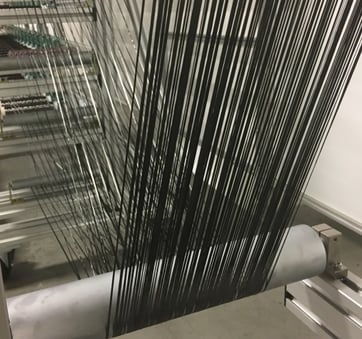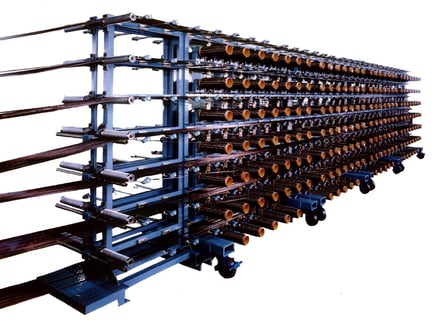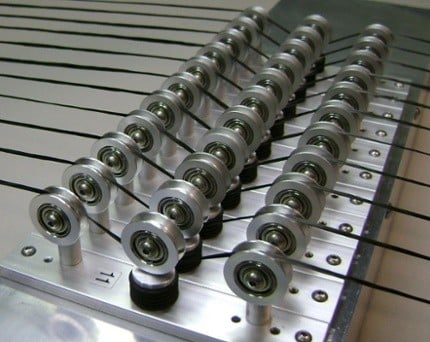 The importance of the accuracy of the tension coming off of a creel or let-off is forgotten at times. Extensive design effort is put into the equipment to actually produce the sheet or tube formed from carbon fiber, but in many cases the front end of this process is overlooked.
The importance of the accuracy of the tension coming off of a creel or let-off is forgotten at times. Extensive design effort is put into the equipment to actually produce the sheet or tube formed from carbon fiber, but in many cases the front end of this process is overlooked.
The accuracy of tension coming off of the creel can influence the mechanical properties of the part, and either enhance or degrade it depending on the tension control. In some cases, it is not the absolute value of tension which is important, but the minimization of deviation of tension between ends. A single tow of fiber with higher tension than the others could degrade a UD sheet or a pultruded part….etc.
We have many success stories from our customers implementing our creels. Uniformity and improved characteristics of a UD sheet or tape, better mechanical properties observed in a pultruded part, stronger filament wound products, and better strength in a woven fabric.
See the details below for further types of creels available.
Mechanical Tensioning Creel Systems
In many cases, mechanical tension control creels are used in production. The drawback with mechanical systems is that the tension can vary depending on the diameter of the carbon fiber package. Typically, mechanical systems incorporate a band brake type system, and as the torque is constant, the tension generated becomes tighter and tighter as the package diameter gets smaller.
The ST type self-tensioning creel will overcome the shortcomings of the typical mechanical tensioning systems. The system incorporates a compensation system which maintains the same tension regardless of the package diameter. That means that even with a creel loaded with packages of varying diameter, each fiber produces the same tension.
The ST type creel can be provided as a full creel system or as tensioning components to mount on existing framework. The units can be provided from a single position to several hundred positions.

Learn more about the ST self-tensioning creel.
Electronic Tension Control
When mechanical tension control doesn’t meet your requirements, an electronically controlled creel may be your solution. Some of the requirements listed below may determine the need for an electronic solution:
- Tension monitoring is required
- Tension needs to change during process (external signal controls the tension setting)
- Higher accuracy of tension is required
- Frequent tension changes due to product recipes are required
There are a few tension control systems to select from:
Non-contact diameter monitoring
This would be the preferred method for large scale production creels as there will be no need to contact the fiber. A non-contact sensor measures the diameter of the package, and the fiber is always controlled to the set tension. The tension will be set on the main operator screen. The non-contact sensors can be provided for each position, for several pre-determined zones, or for a single master position.
Learn more about the U-CTD creel systems.
Tension monitoring feed-back control
When you want higher accuracy or have the need to monitor/record the actual tension going into your process, this feedback system would be the system to use. The tension of each fiber is measured by a sensor, and this provides feedback to the tension controller. Alternatively, the tension of the web as a whole can be monitored. The tension can also be monitored in real time and logged for analysis. In this way, it is possible to know exactly what tension is going into the process.
Learn more about the CTF creel systems.
Tension control by dancer system
If a bi-directional tension control is required, or extremely low levels of tension need to be controlled, a dancer system with positive feed would be a good choice. A servo motor driven package would be controlled by dancer position to provide a stable tension. The servo motor can reverse to take up slack as well. This is also the choice for extremely fragile fibers where a light tension control is required.
Learn more about the BDT-X creel systems.

For more information
Not exactly sure which solution you need, or starting from scratch on a new production line? Contact our experienced engineers for custom solutions tailored to your particular needs.

